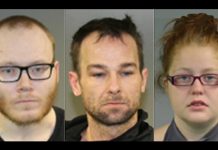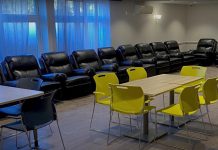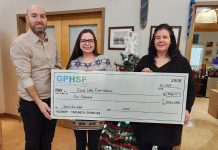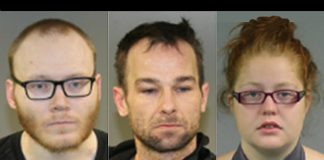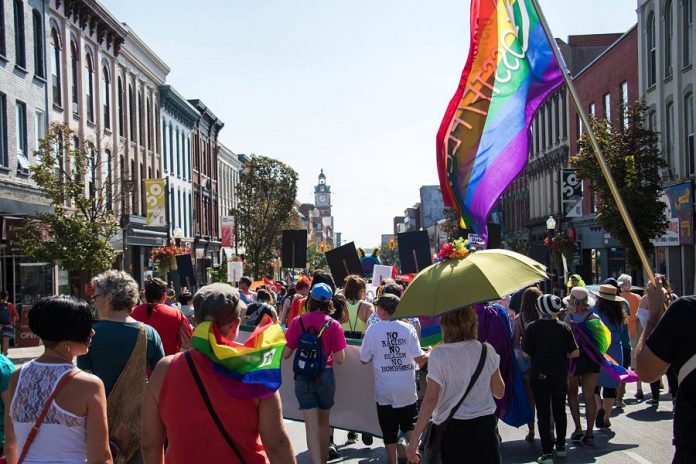
Peterborough Pride, the annual celebration welcoming all people regardless of their sexuality or gender identity, returns for its 16th year from Friday, September 14th until Sunday, September 23rd.
The origins of the Peterborough celebration go back to 2003, when Peterborough’s then-mayor Sylvia Sutherland proclaimed September 13th as “Gay Pride Day”. On that day, 300 people gathered in front of City Hall to participate in the very first Pride parade in Peterborough.
Since then, Peterborough Pride has grown into a full week of fun and informative events in mid-September to celebrate diversity and to support the LGBTQ+ community, culminating in the Pride parade at the end of the week.
“LGBTQ+” stands for “Lesbian, Gay, Bisexual/Pansexual, Transgender, Queer/Questioning”, with the “+” suffix meant to accommodate additional sexual and gender identities such as Intersex, Asexual/Aromantic, and Two Spirit. (For those interested in understanding what these terms mean, the Peterborough Pride organization has provided a glossary we’ve included at the end of this story.)
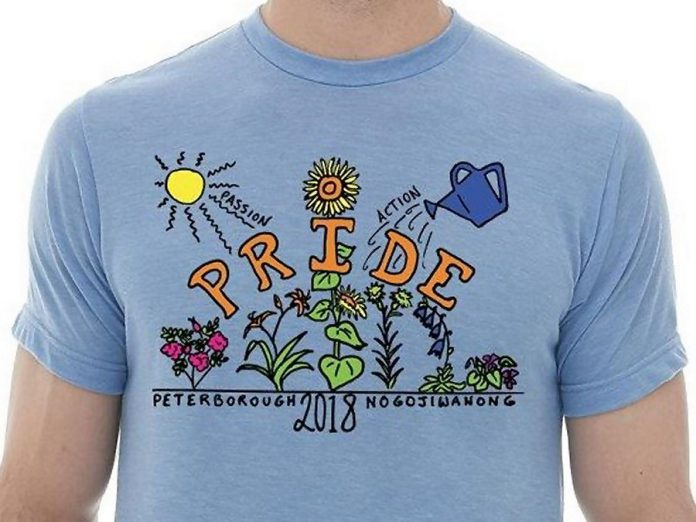
The theme of this year’s Peterborough Pride Week is “Passion + Action = Pride” and features more than 25 events taking place in or near downtown Peterborough. Pride, with help from the the Peterborough Downtown Business Improvement Area (DBIA), is inviting downtown businesses to decorate and put out a welcoming message to participants and the broader community.
“The LGBTQ+ community is diverse so we invite individuals and groups to host events with programming during Pride Week that reflects the spectrum of interests within the community,” says Peterborough Pride committee member Rick Lambert. “Pride events provide a space for participants to gather, share ideas, speak their minds, support each other, and have fun in a safe and accepting environment.”
The week begins with a flag-raising ceremony at noon on Friday, September 14th at Peterborough City Hall. In recent years, Peterborough Mayor Daryl Bennett has read the Pride Day Proclamation and participated in raising the Pride flag over City Hall.
The week ends with the Pride Parade in downtown Peterborough on Saturday, September 22nd. This year’s parade is expected to include over 750 participants, including numerous floats and groups and a pipe band. After the parade, the “Pride in the Park” event takes place at Millennium Park, with a family picnic, live music, food, and a beer tent, as well as information booths related to the LGBTQ+ community and more.
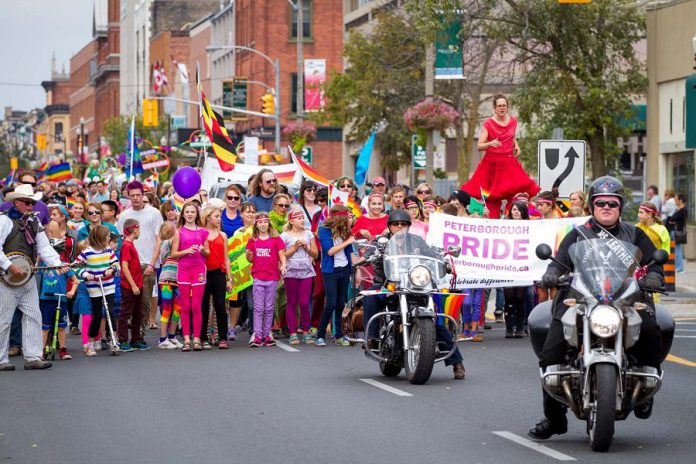
Peterborough Pride is not only about celebrating diversity and inclusivity — it is also a political act that both recognizes progress for the LGBTQ+ community while raising awareness and taking a stand on issues that impact LGBTQ+ individuals and their families in all jurisdictions.
In 2005, Peterborough Pride celebrated the passage of Bill C-38 which proclaiming that all couples, regardless of gender, have equal marriage rights in every province and territory of Canada. This and more recent legal changes that affirm the rights of Transgender persons are supported and celebrated at Pride events.
This year, the Government of Ontario’s controversial decision to dismantle the 2015 sex-education curriculum — which includes teachings about sexual orientation, gender identity, cyber-bullying, and more — is one of the issues of interest during Peterborough Pride.
The Peterborough Pride organization is made up entirely of volunteers and is supported by the City of Peterborough, community organizations, local businesses, and the broader community. For more about Peterborough Pride and a detailed listing of events during Pride Week, visit www.peterboroughpride.ca.
The following background material has been supplied by the Peterborough Pride organization:
History of Pride Celebrations
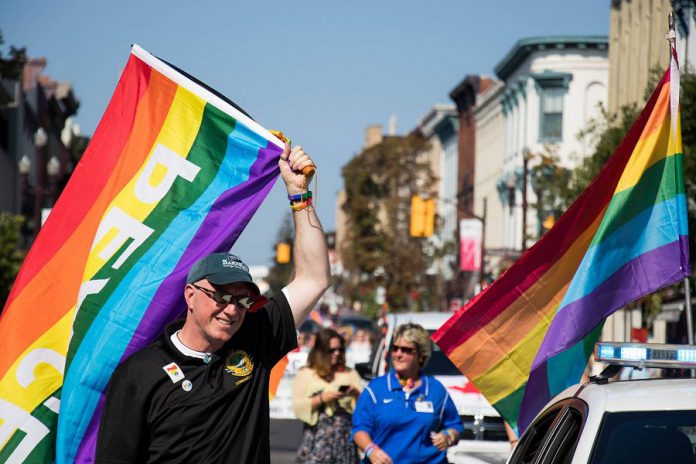
Formal Pride parades and related events have taken place around the globe for close to 50 years, beginning with New York’s first Pride march in 1970.
This event was held to commemorate the Stonewall Riots the previous year, which resulted when the LGBTQ+ community took a stand against police harassment and brutality, fighting back as policemen attempted to force them out of the Stonewall Inn.
Since then, Pride events have been a way of rallying for equal rights in regards to sexual orientation and gender identity. The response to these celebrations varies depending on the hosting countries, cities and current circumstances. In some places, Pride events are met with brutal physical violence from the state, police, and groups who oppose LGBTQ+ rights.
With Pride we acknowledge the history and ongoing fight for equality and human rights, celebrate the diversity within the LGBTQ+ community, work to improve the quality of life for LGBTQ+ community members, and send a message to the broader community of the need for acceptance and inclusion for everyone regardless of sexual orientation or gender identity.
Pride is a political act and a joyful celebration of LGBTQ+ cultures that is focused on inclusion.
Themes that are typically at the core of most Pride celebrations today are:
- Acknowledgement of the history and the ongoing fight for equality;
- Celebration of diversity and who each person is as LGBTQ+ individuals;
- Human rights advocacy;
- Build community and quality of life for those in the LGBTQ+ community;
- Bring messages to the broader community of the need for acceptance and inclusion;
- Political alignments.
History of the Rainbow Flag
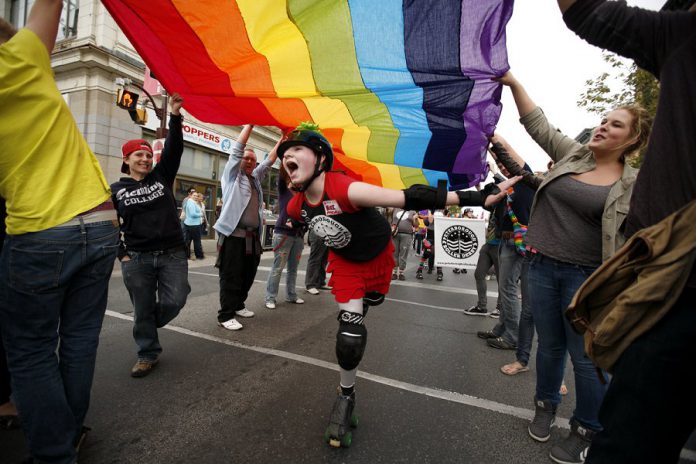
The rainbow flag, commonly called the gay pride flag and sometimes the LGBTQ+ pride flag, is a symbol of lesbian, gay, bisexual, and transgender pride, and LGBTQ+ social movements.
Its colours reflect the diversity of the LGBTQ+ community, and the flag is often used as a symbol of Pride in LGBTQ+ rights marches. It originated in California but is now used worldwide.
Designed by San Francisco artist Gilbert Baker in 1978, the design has undergone several revisions to first remove, then re-add colours, due to widely available fabrics. As of 2008, the most common variant consists of six stripes featuring the colours red, orange, yellow, green, blue, and violet.
The flag is commonly flown horizontally, with the red stripe on top as it would be in a natural rainbow.
The original gay pride flag flew in the San Francisco Gay Freedom Day Parade on June 25, 1978. It has been suggested that Mr. Baker was inspired by Judy Garland’s singing of “Over the Rainbow” and the Stonewall riots that happened a few days after Garland’s death. Thirty volunteers hand-dyed and stitched the first two flags for the parade.

After the November 27, 1978, assassination of openly gay San Francisco city supervisor Harvey Milk, demand for the rainbow flag greatly increased. To meet the demand, the Paramount Flag Company began selling a version of the flag using stock rainbow fabric consisting of seven stripes of red, orange, yellow, green, turquoise, blue and violet. As Baker ramped up production of his version of the flag, he too dropped the hot pink stripe because of the unavailability of hot-pink fabric.
The rainbow flag celebrated its 25th anniversary in 2003. During Pride celebrations in June of that year, Mr. Baker restored the rainbow flag back to its original eight-striped version and has since advocated that others do the same. However, the eight-striped version has seen little adoption by the wider gay community which has mostly stuck with the better known six-striped version.
That said, various variations of the rainbow flag are still widely displayed, including at Peterborough’s annual Pride Parade.
The flag’s colours, and their meaning, are as follows: red, life; orange, healing; yellow, sunlight; green, nature; turquoise, magic/art; blue, serenity/harmony; and violet, spirit.
Did You Know…? LGBTQ+ Terminology Explained
LGBTQIA2-S
LGBTQIA2-S stands for Lesbian, Gay, Bisexual/Pansexual, Transgender, Queer/Questioning, Intersex, Asexual/Aromantic, and Two Spirit. This is by no means a comprehensive list of identities and these definitions tend to shift and expand as the dominant culture changes.
Lesbian
adjective – relating to a woman, or femme-aligned non-binary person, who experiences attraction emotionally, romantically, and/or physically for other women or femme-aligned non-binary people.
Gay
adjective –
1) relating to a man, or masc-aligned non-binary person, who experiences attraction emotionally, romantically, and/or physically for other men or masc-aligned non-binary people.
2) an umbrella term often used to refer to non-heterosexual sexual identities.
Bisexual/Pansexual
adjectives – relating to any person who experiences attraction emotionally, romantically, and/or physically for one or more genders; Pansexuality expands upon this to include all genders. There is considerable overlap between Bisexuality and Pansexuality and so it is left up to the individual to decide how they wish to define themselves.
Transgender
adjective – relating to a person whose assigned gender is not congruent with how they experience their gender.
Queer/Questioning
adjectives – Historically, queer was used as a derogatory term to refer to homosexual people and as such should only be used as a form of reclamation. i.e. It is rude to call someone queer who does not openly identify this way or has not given you permission to do so. Questioning refers to people who are not certain of their identity and who require a safe space to explore their possibilities.
Intersex
adjective – a general term used for a variety of conditions in which a person is born with reproductive or sexual anatomy that does not seem to fit the arbitrary definitions of male or female sex characteristics.
Asexual/Aromantic
adjectives – two distinct terms that refer to a person who experiences either little to no sexual or romantic attraction.
Two Spirit
adjective – refers to an Indigenous person on Turtle Island (North America) whose gender experience incorporates both or lays outside of a male/female binary. Historically, Two Spirit people have existed for as long as oral traditions account for, and were specifically targeted during early colonization for their apparent queerness and were largely erased from history. The term Two Spirit, however, is recent and comes from the 1990 Native American/First Nations Gay and Lesbian Conference in Winnipeg. A Two Spirit person may or may not also identify as LGBTQIA2-S since the acronym is a settler-colonial invention. Two Spirit is a term that belongs to Indigenous peoples only, and not a term for non-Indigenous people to identify as.
Non-Binary
adjective – refers to a person whose gender experience cannot be entirely described by male or female identities.
Cisgender
adjective – refers to a person who is content with the gender they were assigned at birth.
Femme
adjective – refers to a queer woman or non-binary person who acts and dresses in a traditionally feminine manner.
Masc
adjective – refers to a queer man or non-binary person who acts and dresses in a traditionally masculine manner.


